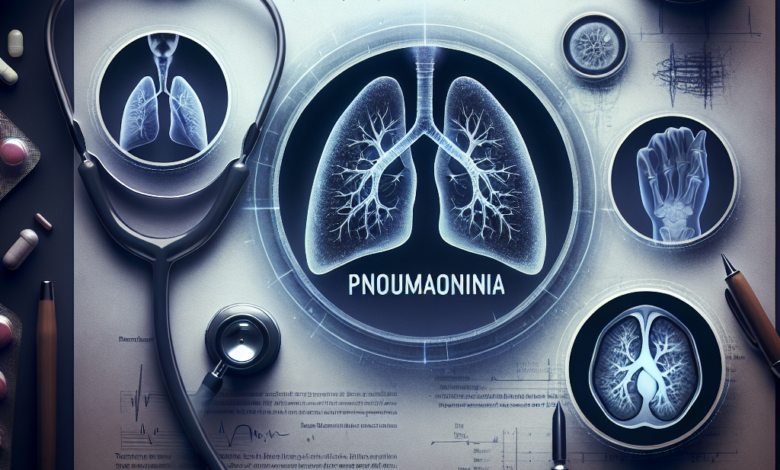The Silent Threat: Recognizing the Early Signs of Pneumonia

The Silent Threat: Recognizing the Early Signs of Pneumonia
Pneumonia, an infection that inflames the air sacs in one or both lungs, can be a silent yet serious threat, especially for vulnerable populations. Understanding its early signs can be crucial in prompting timely medical intervention. This article aims to shed light on pneumonia’s symptoms, risk factors, and the importance of awareness in mitigating its potentially severe consequences.
Understanding Pneumonia
Pneumonia can result from various pathogens, including bacteria, viruses, and fungi. It can be especially dangerous for infants, the elderly, and individuals with compromised immune systems. Symptoms may vary in severity, often resembling those of a common cold or flu, which can lead to delays in diagnosis and treatment.
Early Signs to Watch For
Identifying pneumonia in its early stages can be pivotal. Here are some of the primary symptoms to be aware of:
-
Cough: A persistent cough that produces phlegm can be an early indication. The mucus may appear green, yellow, or even rust-colored.
-
Shortness of Breath: Difficulty breathing or a feeling of breathlessness, especially during routine activities, may signify pneumonia.
-
Chest Pain: Discomfort or pain in the chest, especially when coughing or taking deep breaths, may also be a warning sign.
-
Fatigue: An unexplained and overwhelming fatigue that doesn’t seem to correlate with physical activity may be a red flag.
-
Fever and Chills: A high fever coupled with shaking chills often indicates an infection, including pneumonia.
-
Nausea and Diarrhea: Although less common, gastrointestinal symptoms can accompany respiratory manifestations, particularly in viral pneumonia.
- Confusion or Changes in Mental Awareness: In older adults, confusion or a sudden change in behavior can be an early sign of pneumonia.
Risk Factors
Certain groups are more susceptible to pneumonia, and recognizing these risk factors can aid in early detection:
- Age: Infants and those over 65 are at higher risk.
- Smoking: Tobacco use damages lung tissue, making individuals more vulnerable to infections.
- Chronic Health Conditions: Conditions like asthma, COPD, diabetes, and heart disease can increase the risk of pneumonia.
- Immunocompromised States: Those on immunosuppressive medications or with HIV/AIDS are more likely to develop serious infections.
The Importance of Seeking Help
If you or someone you know exhibits signs of pneumonia, it is essential to seek medical attention promptly. Early diagnosis often involves a physical exam, chest X-rays, and sometimes laboratory tests to determine the causative agent of the infection. Timely intervention can significantly improve outcomes and may involve antibiotics for bacterial infections or antiviral medications for viral pneumonia.
Prevention Strategies
While not all pneumonia is preventable, certain strategies can reduce the risk of infection:
- Vaccination: Vaccines are available to protect against the most common types of pneumonia, including pneumococcal pneumonia and the flu.
- Good Hygiene Practices: Frequent handwashing and using hand sanitizers can help prevent infections.
- Avoid Smoking: Quitting smoking can enhance lung health and decrease susceptibility to respiratory infections.
- Healthy Lifestyle: A well-balanced diet, regular exercise, and sufficient rest can bolster the immune system.
Conclusion
Pneumonia is often portrayed as a silent threat, one that can escalate quickly if left untreated. By recognizing the early signs and understanding the associated risk factors, individuals can take proactive steps to safeguard their health. Awareness and timely intervention can be life-saving, allowing for a quick return to health and normalcy.
